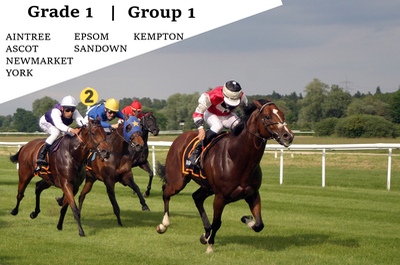 For those of you unaware of how the classifications of horse races work, Grade 1/Group 1 is the most elite level possible (in jumps and flat racing, respectively). These contests see some of the very best horses compete within the specified eligibility criteria. The reason for the different names is simply because Grade 1 is the top level for any jumps (National Hunt) race but for flat racing they use ‘Group’ instead of ‘Grade’, though both belong to their respective Class 1 (which also includes Group/Grade 2, Group/Grade 3 and Listed races).
For those of you unaware of how the classifications of horse races work, Grade 1/Group 1 is the most elite level possible (in jumps and flat racing, respectively). These contests see some of the very best horses compete within the specified eligibility criteria. The reason for the different names is simply because Grade 1 is the top level for any jumps (National Hunt) race but for flat racing they use ‘Group’ instead of ‘Grade’, though both belong to their respective Class 1 (which also includes Group/Grade 2, Group/Grade 3 and Listed races).
Although there are some notable exceptions, mainly popular handicaps like the Grand National, it is these Group 1 and Grade 1 contests that attract the most attention and biggest crowds. They are the kind of contests any racecourse would love to host but few actually get to enjoy the feeling. Rather than being spread out across the nation, Grade 1 and Group 1 races are only found at a small number of venues. So, if you are looking to watch some of the finest horse racing the UK has to offer, you will need to head to one of these.
Grade 1 Racecourses
A total of nine National Hunt racecourses host Grade 1 racing, although several of them feature just one event at this level. No course boasts more than Cheltenham, which is not the least bit surprising as it is considered to be the home of jumps racing and is also the location of the world-famous Cheltenham Festival. We will focus on this special racecourse in a little more depth while also looking at the other courses supplying Grade 1 viewing.
Aintree

Aintree is best known as being the home of the Grand National but this race, despite its reputation and interest, is actually a Grade 3 handicap. The Merseyside course offers a lot more in the way of ‘higher-quality’ affairs with a very impressive helping of 11 Grade 1 events. Rather than being spread out over the National Hunt season, they all find themselves scheduled during April’s three-day Grand National Festival.
This ensures that the late-season meeting is full to the brim with scintillating racing. The Grand National steals the spotlight of course, but each day is oozing with quality. None of the 11 races takes place over the challenging Grand National fences but the Mildmay Course is far from a walk in the park. To win a Grade 1 race at Aintree, horses most often need to be assured jumpers.
| Month | Race | Type | Distance | Age |
|---|---|---|---|---|
| April | Manifesto Novices’ Chase | Chase | 2m 4f | 5yo + |
| April | Anniversary 4-Y-O Novices’ Hurdle | Hurdle | 2m 1f | 4yo |
| April | Betway Bowl | Chase | 3m 1f | 5yo + |
| April | Aintree Hurdle | Hurdle | 2m 4f | 4yo + |
| April | Top Novices’ Hurdle | Hurdle | 2m ½f | 4yo + |
| April | Mildmay Novices’ Chase | Chase | 3m 1f | 5yo + |
| April | Melling Chase | Chase | 2m 4f | 5yo + |
| April | Sefton Novices’ Hurdle | Hurdle | 3m ½f | 4yo + |
| April | Mersey Novices’ Hurdle | Hurdle | 2m 4f | 4yo + |
| April | Maghull Novices’ Chase | Chase | 2m | 5yo + |
| April | Ryanair Stayers’ Hurdle | Hurdle | 3m ½f | 4yo + |
Ascot
Ascot is best known for its range of top-quality flat racing (which we will explore later on) but the all-year-round royal racecourse does have a very strong jump racing catalogue too. In addition to nine Group 2/3 races, this incredibly popular course also hosts three Grade 1 events spread across the heart of winter. Up until 2006, the Clarence House Chase ran as a handicap but in 2007 it switched to being a Grade 1 conditions race, a status it has held since.
| Month | Race | Type | Distance | Age |
|---|---|---|---|---|
| December | Long Walk Hurdle | Hurdle | 3m 1f | 4yo + |
| January | Clarence House Chase | Chase | 2m 1f | 5yo + |
| February | Ascot Chase | Chase | 2m 5f | 5yo + |
Cheltenham
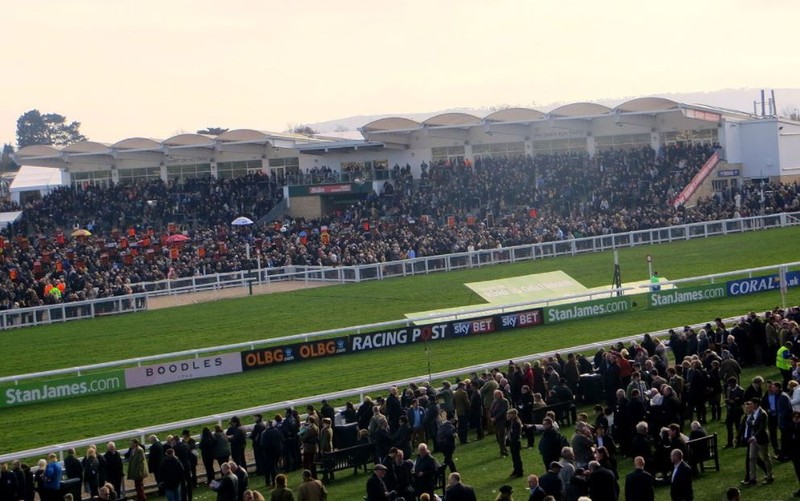
In a typical year, the Cheltenham Festival will usually host a crowd in excess of 250,000 over the course of the four days. It is an immensely popular meeting and one that never fails to excite thanks to its world-class schedule. It is the Festival itself that features all 14 of the Grade 1 races Cheltenham has to offer. Racing does take place on the Gloucestershire course for the full National Hunt season but organisers have long preferred to put all their best eggs in one basket.
There are some truly massive affairs among the list below but the undisputed king of them is the Cheltenham Gold Cup. As National Hunt’s most prestigious race, it has been won by some true racing greats over the years such as Arkle, Best Mate, Kauto Star and Mill House.
| Month | Race | Type | Distance | Age |
|---|---|---|---|---|
| March | Supreme Novices’ Hurdle | Hurdle | 2m ½f | 4yo + |
| March | Arkle Challenge Trophy | Chase | 2m | 5yo + |
| March | Champion Hurdle | Hurdle | 2m ½f | 4yo + |
| March | Close Brothers Mares’ Hurdle | Hurdle | 2m 4f | 4yo + |
| March | Ballymore Novices’ Hurdle | Hurdle | 2m 5f | 4yo + |
| March | Brown Advisory Novices’ Chase | Chase | 3m ½f | 5yo + |
| March | Queen Mother Champion Chase | Chase | 2m | 5yo + |
| March | Champion Bumper | Flat | 2m ½f | 4–6yo |
| March | Marsh Novices’ Chase | Chase | 2m 4f | 5yo + |
| March | Ryanair Chase | Chase | 2m 5f | 5yo + |
| March | Stayers’ Hurdle | Hurdle | 3m | 4yo + |
| March | Triumph Hurdle | Hurdle | 2m 1f | 4yo |
| March | Albert Bartlett Novices’ Hurdle | Hurdle | 3m | 4yo + |
| March | Cheltenham Gold Cup | Chase | 3m 2½f | 5yo + |
Now, you might be wondering why there is a flat race included in the list above, this is because the Champion Bumper is what is known as a National Hunt Flat (NHF) race. These no-obstacle races are not designed for the fastest horses in the business, rather horses being prepped for a career as a hurdler/chaser. Generally, bumper races are not held at an extremely high standard and this is the only one to hold Grade 1 status.
Chepstow
Chepstow, home of the Welsh Grand National, has just one Grade 1 event on its books. This takes the form of the Finale Juvenile Hurdle which is scheduled for December but does, semi-regularly run in January because of waterlogging or frost. Heavy conditions are a regular sight for this south Wales challenge so, despite the Finale Juvenile Hurdle being just half a furlong over two miles in distance, some stamina is often required.
Haydock
Much like Chepstow, Haydock Park is home to just a single Grade 1 race. Although its registered name is the Lancashire Chase, it has been referred to for so many years by its sponsored name, the Betfair Chase. When first launched in 2005, it formed part of the ‘Betfair Million’ promotion alongside the King George VI Chase and the Cheltenham Gold Cup. Although this promotion helped created some immediate hype for the race, it always catches the attention of many simply because it is the first Grade 1 event of the National Hunt season.
Kempton
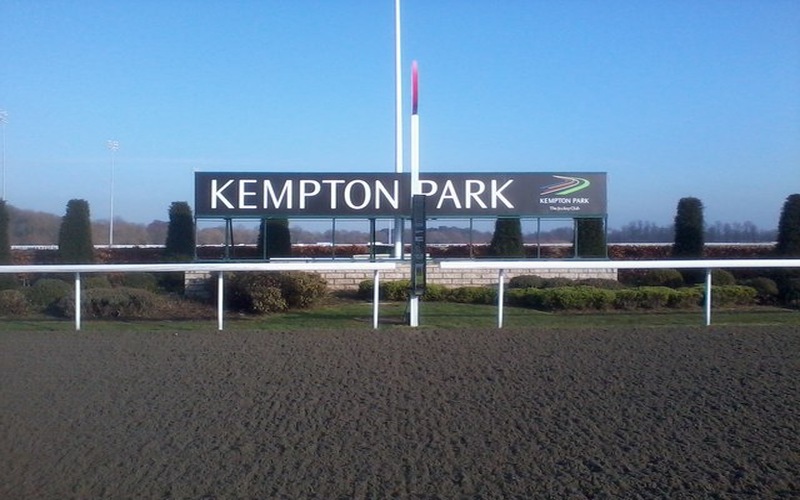
Every year, providing bad weather doesn’t get in the way, Kempton puts on a festive feast for racing fans through their King George VI Chase meeting. Held across Boxing Day and the following day, many people have the opportunity to tune in to or attend this long-celebrated two-day fixture. From the trio of Grade 1 races that feature, the King George VI Chase is the one that really creates the largest amount of pre-race hype. It regularly attracts some extremely able horses including five-time champion Kauto Star. His unrivalled success at Kempton is exactly the reason why the meeting has a race named in his honour.
| Month | Race | Type | Distance | Age |
|---|---|---|---|---|
| December | Kauto Star Novices’ Chase | Chase | 3m | 4yo + |
| December | Christmas Hurdle | Hurdle | 2m | 4yo + |
| December | King George VI Chase | Chase | 3m | 4yo + |
Newbury
Unlike some dual-purpose courses, Newbury does not end up specialising more in one type of racing. Instead, it offers consistent quality all year round. As well as 12 group level flat races, it also hosts nine graded National Hunt events. Only one of these carries Grade 1 status though, this being the Challow Novices’ Hurdle. Run on the 29th December, it is another great horse racing spectacle that takes place during the festive period.
Newcastle
Newcastle’s flat course made the switch from turf to all-weather in 2015/16 but the turf jumps racing course remains intact. By keeping their stiff, left-handed loop, there was no need to rehome the Fighting Fifth Hurdle which has run at Tyneside since 1969. It is the first of three legs that form that Triple Crown of Hurdling so it is certainly a prestigious affair that top hurdlers target. Despite the pedigree of this race though, it is the sole graded race Newcastle hosts.
Sandown
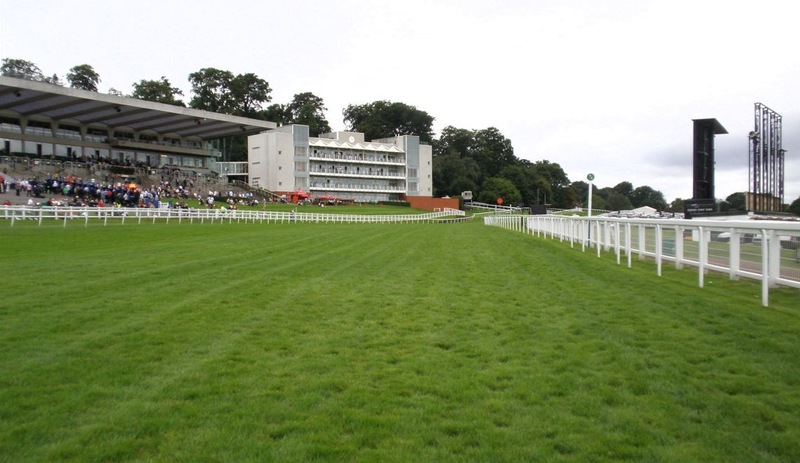
The final course to mention is Sandown, a place that has five Grade 1 races to offer. Three of them are reserved for novices but the Tingle Creek Chase and Celebration Chase allows for more experienced horses to compete. Held months apart, it has been known for horses to win both events within the same season, Altior (2018), Sire de Grugy (2013) and Twist Magic (2009) being prominent examples.
| Month | Race | Type | Distance | Age |
|---|---|---|---|---|
| December | Henry VIII Novices’ Chase | Chase | 2m | 4yo + |
| December | Tingle Creek Chase | Chase | 2m | 4yo + |
| January | Tolworth Novices’ Hurdle | Hurdle | 2m | 4yo + |
| Jan / Feb | Scilly Isles Novices’ Chase | Chase | 2m 4½f | 5yo + |
| April | Celebration Chase | Chase | 2m | 5yo + |
Group 1 Racecourses
There are only a few more Grade 1 races compared to Group 1 races so it is not too surprising that the full set is again divided across nine racecourses. Much like with jumps racing, there are two courses that dominate the list, accounting for more than half of all Group 1 races out there. These courses are Ascot and Newmarket, making the pair real standout options to see the best flat racing has to offer.
Ascot is not the only course to feature on both our lists as Haydock, Newbury and Sandown also supply Group 1 racing in addition to one, or several, top-rated jumps events. All other courses that will be mentioned here only host flat racing, with the exception of Doncaster. In the case of the Yorkshire course, although they were not included within the Grade 1 list, they do host five Grade 2 races.
Ascot
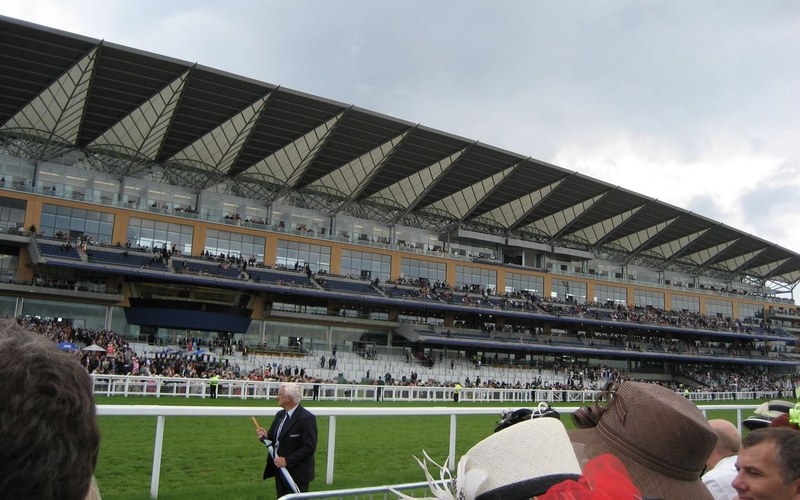
Ascot hosts several major meetings over the flat season including the King George Weekend, British Champions Day and of course, the incredibly prestigious Royal Ascot. It is actually these three meetings where you will find all of Ascot’s 13 Group 1 races. People will argue over which is their favourite, for some it will be the King George (King George VI and Queen Elizabeth Stakes) while others prefer the long-distance Gold Cup, nearly two-and-a-half miles in length. At this distance, it is comfortably the longest Group event held in Britain and a real test of endurance.
| Month | Race | Distance | Age/Sex |
|---|---|---|---|
| June | Queen Anne Stakes | 1m | 4yo+ |
| June | King’s Stand Stakes | 5f | 3yo+ |
| June | St James’s Palace Stakes | 7f 213y | 3yo c |
| June | Prince of Wales’s Stakes | 1m 1f 212y | 4yo+ |
| June | Gold Cup | 2m 3f 210yd | 4yo+ |
| June | Commonwealth Cup | 6f | 3yo c&f |
| June | Coronation Stakes | 7f 213y | 3yo f |
| June | Diamond Jubilee Stakes | 6f | 4yo+ |
| July | King George VI and Queen Elizabeth Stakes | 1m 3f 211y | 3yo+ |
| October | British Champions Sprint Stakes | 6f | 3yo+ |
| October | British Champions Fillies’ and Mares’ Stakes | 1m 3f 211y | 3yo+ f |
| October | Queen Elizabeth II Stakes | 1m | 3yo+ |
| October | Champion Stakes | 1m 1f 212y | 3yo+ |
Doncaster
Although it is not among the most well-known racecourses the UK has to offer, Doncaster is home to one of the five Classic races, the St Leger. It is in the Yorkshire town where the race first originated back in 1776, making it the oldest of the five historic contests. The final leg of the English Triple Crown is not the only Group 1 race at Doncaster though as this is also the home of the Vertem Futurity Trophy. Scheduled for late October, this two year old-only contest is the final big race of the flat season and often a useful guide for the following year’s Derby.
Epsom
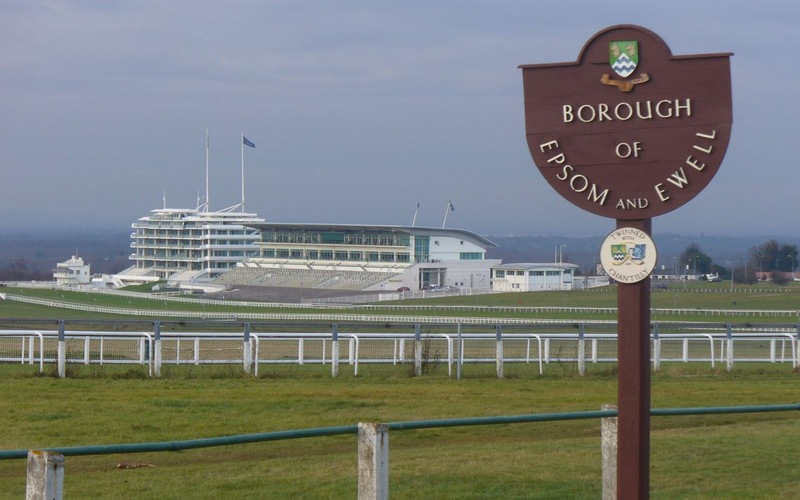
We just mentioned that Doncaster hosts one of the five Classic races and Epsom is where you will find another two. Both the Oaks (fillies) and Derby (colts and fillies) take place over the same two-day meeting with the Derby usually acting as the richest race of the season. The pair have such a deep and rich history with the Oaks first introduced in 1779 and the Derby following just a year later. On the very same day the Oaks is run in late May/early June, we also see the Coronation Cup, which is run over exactly the same distance but is only available to older horses.
| Month | Race | Distance | Age/Sex |
|---|---|---|---|
| May / June | Coronation Cup | 1m 4f 6y | 4yo+ |
| May / June | Oaks Stakes | 1m 4f 6y | 3yo f |
| June | Derby Stakes | 1m 4f 6y | 3yo c&f |
Goodwood
Glorious Goodwood is a festival with international recognition and it is during this glamorous event that you will find the racecourse’s trio of Group 1 races. They all pack quite the punch in terms of prize money, each exceeding half a million pounds in 2021 with the Sussex Stakes even reaching £1m. These are all races any trainer/owner would love to win and you will find them taking place on the first, second and third day of the five-day Glorious Goodwood festival.
| Month | Race | Distance | Age/Sex |
|---|---|---|---|
| July / Aug | Goodwood Cup | 2m | 3yo+ |
| July / Aug | Sussex Stakes | 1m | 3yo+ |
| July / Aug | Nassau Stakes | 1m 1f 197y | 3yo+ f |
Haydock
Haydock’s only Group 1 race does not tend to last very long. The Haydock Sprint Cup is just six furlongs in length and it does not take the quickest horse much more than a minute to reach the winning post. In its earlier years, competing sprinters had to navigate around a sharp left-handed bend before reaching the run-in but Haydock installed a six-furlong straight course in 1986. Since then, all runners have faced just a simple straight-line run to the line.
Newbury
In addition to their one Grade 1 hurdle race, Newbury also has a single Group 1 flat event. It is quite a notable one too with the one-mile Lockinge Stakes forming part of the British Champions Series in 2011. Horses of either gender can complete providing they are at least four years old but fillies and mares benefit from a three-pound weight allowance. Some extremely able horses have won this race since it was established in 1958 with Frankel (2012) being one of the most famous examples.
Newmarket
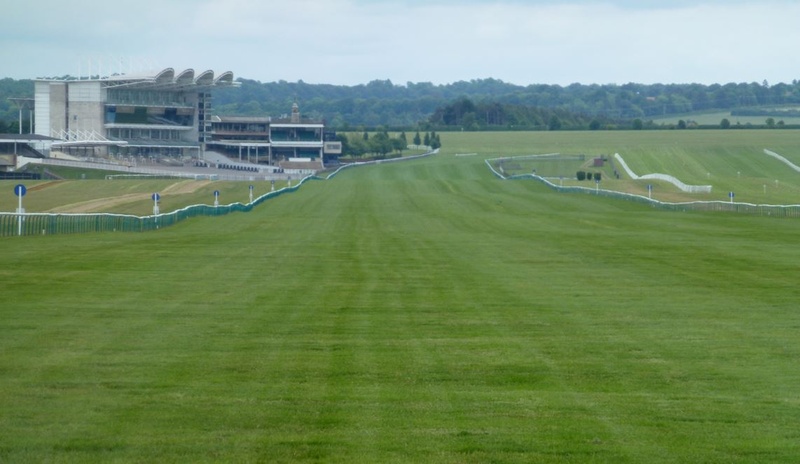
A total of nine Group 1 races find themselves based in Newmarket and they are spread out, fairly evenly across the flat season. Up first is the 2,000 and 1,000 Guineas, the final two Classic races we are yet to mention. Much like the with Epsom Oaks/Derby, they take place a day apart and while one (1,000 Guineas) is reserved for fillies, the other (2,000 Guineas) is open to both sexes. Moving into the heart of summer and the July Cup, which is run on the especially popular July Course, is the real highlight here.
Before the flat season concludes, racing returns to the Rowley Mile course for some autumnal action. At this stage, Newmarket brings out a pair of Group 1 sprint events in September followed by a one-mile duo in October. Also featuring at this time is the Dewhurst Stakes which is the last chance some budding two year olds get to impress, as a juvenile, on a big stage.
| Month | Race | Distance | Age/Sex |
|---|---|---|---|
| April / May | 2000 Guineas Stakes | 1m | 3yo c&f |
| April / May | 1000 Guineas Stakes | 1m | 3yo f |
| July | Falmouth Stakes | 1m | 3yo+ f |
| July | July Cup | 6f | 3yo+ |
| September | Cheveley Park Stakes | 6f | 2yo f |
| September | Middle Park Stakes | 6f | 2yo c |
| October | Sun Chariot Stakes | 1m | 3yo+ f |
| October | Fillies’ Mile | 1m | 2yo f |
| October | Dewhurst Stakes | 7f | 2yo c&f |
Sandown
When introduced in 1886, the Eclipse Stakes was the richest race ever to run in Britain. Although this is no longer the case, it still carries a very impressive purse (£600,000 in 2021). You will often find the contest referred to as the Coral Eclipse given that the prominent bookie has sponsored the race since 1976. It is the only Group 1 race found at Sandown so naturally it is the highlight of their flat racing calendar.
York
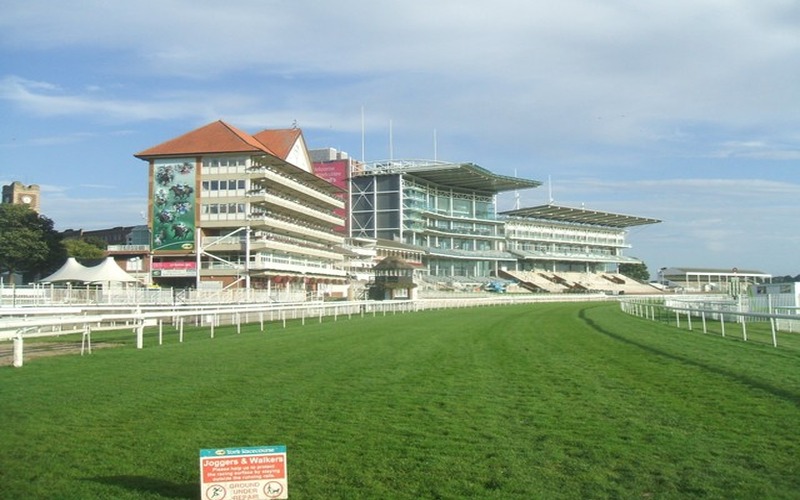
Every year York welcomes around 80,000 visitors across four days for the always-eventful Ebor Festival. The meeting itself is named after the Class 2 Ebor Handicap which regularly attracts 20+ runners but this is far from the only highlight. The meeting is also home to all of York’s three Group 1 races, with the biggest of them being the International Stakes. For many years it has been worth at least £1m, making it one of the most valuable races in the country.
| Month | Race | Distance | Age/Sex |
|---|---|---|---|
| August | International Stakes | 1m 2f 56y | 3yo+ |
| August | Yorkshire Oaks | 1m 3f 188y | 3yo+ f |
| August | Nunthorpe Stakes | 5f | 2yo+ |
